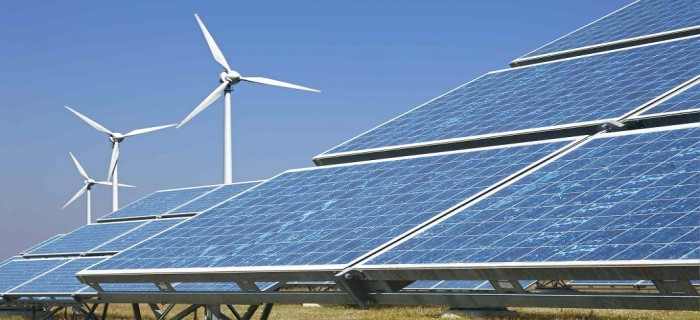
Renewables' Share of Global Power Generation makes a Record Last Year.
20 Apr 2023
Renewable energy’s share of global electricity generation hit a record last year while fossil fuel emissions may have peaked, suggesting progress in the transition to clean energy.
Wind and solar power accounted for a record 12% of global electricity generation in 2022, said Ember, an energy think tank, in its annual report on global electricity demand.
1. The report analyzes data from 78 countries that account for 93% of global demand.At the same time, the carbon intensity of the world’s power grid fell to a record low, underscoring progress in reducing carbon emissions. Together, all clean energy sources, from renewables to nuclear power, accounted for a record 39% of electricity generation.Wind generation rose 17% over the previous year, enough to power almost all of the U.K., while solar output surged 24%, continuing an 18-year streak as the world’s fastest-growing source of electricity. At the same time, coal generation rose just 1.1%, while gas output fell 0.2%. Clean power growth is also likely to exceed growth in electricity demand this year, the first time this has happened outside of a global recession.Last year may have marked the peak in fossil fuel emissions, with Ember forecasting a small decline this year that will accelerate in subsequent years. "2022 will be remembered as a turning point in the world’s transition to clean power, as Russia’s invasion of Ukraine made many governments rethink their plans amid spiking fossil fuel prices and security concerns about relying on fossil fuel imports," the report said. "We are entering the clean power era. Clean electricity will reshape the global economy, from transport to industry and beyond," said Malgorzata Wiatros Motyka, Senior Electricity Analyst at Ember. However, she added the rate of progress "depends on the actions taken now by governments, businesses, and citizens to put the world on a pathway to clean power by 2040."
Renewables in the United States
In the United States, the Inflation Reduction Act signed into law last August has provisions to help boost nuclear power by keeping older plants online, building supply chains for newer plants, and expanding research and development capabilities for small modular reactors (SMRs), which can produce large amounts of low-carbon electricity.
2 . As of 2022, the U.S. still generated about 60% of its electricity from fossil fuels, with nuclear accounting for 18% and wind and solar accounting for a combined 15%. Wind power has been one of the fastest-growing renewable power sources in the U.S. As of January, 141.3 gigawatts of wind capacity were operating in the U.S., with developers planning to add a further 7.1 gigawatts this year.
3. Offshore wind projects such as Vineyard Wind 1 in Massachusetts have gained regulatory approval, bringing to 15 the number of projects that have gained approval. Some of the largest U.S.-based wind developers, including NextEra Energy (NEE) and Invenergy, are operating wind farms generating thousands of megawatts annually, with more awaiting construction.


leave your comment